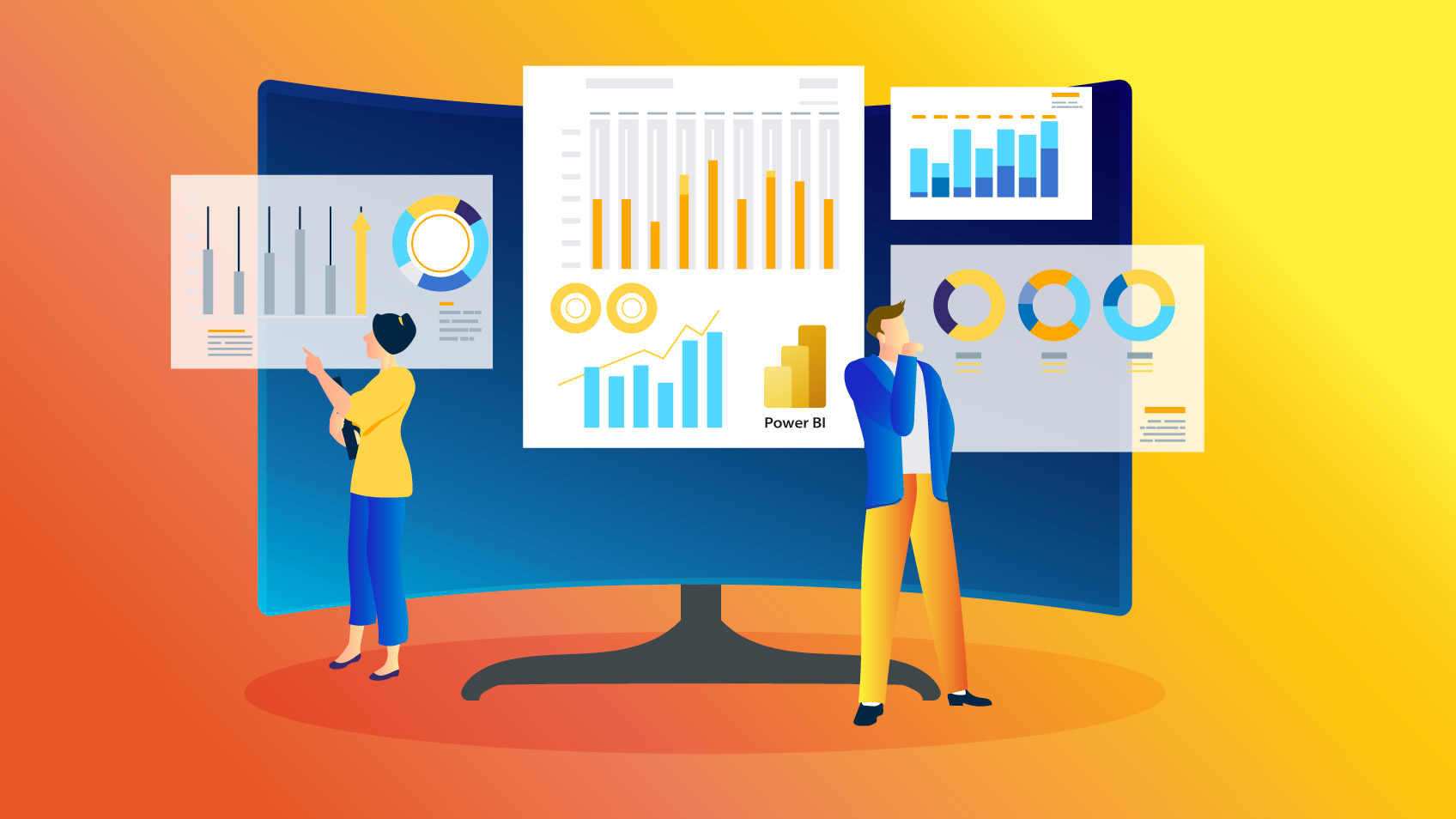Data is the biggest asset in modern-day business. It can help or break an organization. Power BI, Microsoft Fabric and other powerful tools are utilized by companies to maximize the potential of their data. These platforms are at the heart of business intelligence and when used in conjunction with Azure Data Factory they become an effective tool in data analytics and decision-making.
Power BI, Your Business Intelligence Companion
Power BI by Microsoft is a powerful business intelligence software which allows businesses to display and share their data. Power BI lets users create interactive dashboards and report that transform raw data into useful insight.

Power BI can be tailored to meet your specific needs no matter if you’re an entrepreneur or a major firm. Power BI seamlessly integrates various data sources and makes it simple to combine information from different systems and databases. With its easy drag-and-drop interface even non-technical users are able to quickly produce useful reports and analysis.
The Power BI platform supports real-time processing of data, making sure that you’re always working with the most recent data. Power BI offers a range of visualisations that help you present information in a stimulating and digestible way. The ability to collaborate and share reports with colleagues improves decision-making and creates a culture of data-driven decision-making in your workplace.
Microsoft Fabric: Weaving Data to provide excellence
Microsoft Fabric is an underlying framework that integrates and orchestrates data of various Microsoft services. Fabric is the thing that weaves data into a cohesive entity that can be used by companies.
With businesses dealing with ever-increasing volume of data, Microsoft Fabric provides the foundation for data consistency and integrity. Microsoft Fabric is integrated with a broad range of services, from Azure Data Lake Storage, Azure SQL Data Warehouse and Power BI. This interconnectedness allows data to flow easily and allow insights to be derived from different sources.
Microsoft Fabric excels in data transformation. Use it to clean up and prepare data for analysis. It can also be used to it to make sure that data is in line with your organization’s policies on data governance. Microsoft Fabric is the platform that will ensure your data is safe, accurate, and is ready for analysis.
Azure Data Factory: the Gateway to Data Transformation
Azure Data Factory is another essential component in the modern business intelligence landscape. The cloud-based service lets you to manage and plan data-driven processes. Azure Data Factory provides meaningful insight through the orchestration of data movement and transformation.
Azure Data Factory offers many advantages, among them its ability to connect with diverse data sources. If your data is on premises or is in the cloud it is easily integrated and provide you with an entire picture of the data ecosystem. It can handle batch processing, streaming of data in real-time, as well as big analysis of data. This makes it suitable for a variety of use cases.
Azure Data Factory provides a visual interface to ease the design of data pipes. You don’t have to be a coding specialist to easily develop, schedule, or track workflows for data. This empowers business users to make decisions about their data integration processes and can open the way to self-service data preparation.
Power BI, Microsoft Fabric and Azure Data Factory: The Power Trio
When Power BI and Azure Data Factory is combined, they can create a powerful trio that will change the way you analyze data. How do they interact?
1. Data Integration: Azure Data Factory can connect to multiple data sources and ensure that your data is readily available. The data integration feature feeds into Microsoft Fabric, which orchestrates the data from various services. This ensures that your data has been well-organized, cleaned, before it can be used to be used in Power BI analysis.
2. Data Transformation: Microsoft Fabric plays a important role in data transformation that allows you to alter the data you have to suit the needs of your analysis. Whether it’s data wrangling, cleansing or transforming it, the fabric makes sure that the data is prepared for meaningful analysis.
3. Power BI will take over once your data has been refined and is ready to be used. It lets you create visually appealing reports and dashboards which make complicated data easier to understand. The insights you gain can be shared with your team members to encourage data-driven decisions.
4. Scalability: Azure Data Factory can scale to accommodate growing amounts of data. Combining Power BI with Microsoft Fabric will ensure that your data remains steady and reliable as your company grows.
5. Power BI & Azure Data Factory can provide real-time information which is crucial for a fast and efficient decision making.
Conclusion
Business intelligence is changing rapidly and businesses must tap into the power of data to stay competitive. Power BI combined with Microsoft Fabric and Azure Data Factory can take your business analytics to the next level. This trio will enable you to create stunning visuals, keep data consistency or streamline the data flow. Discover the power of data by utilizing business intelligence.

